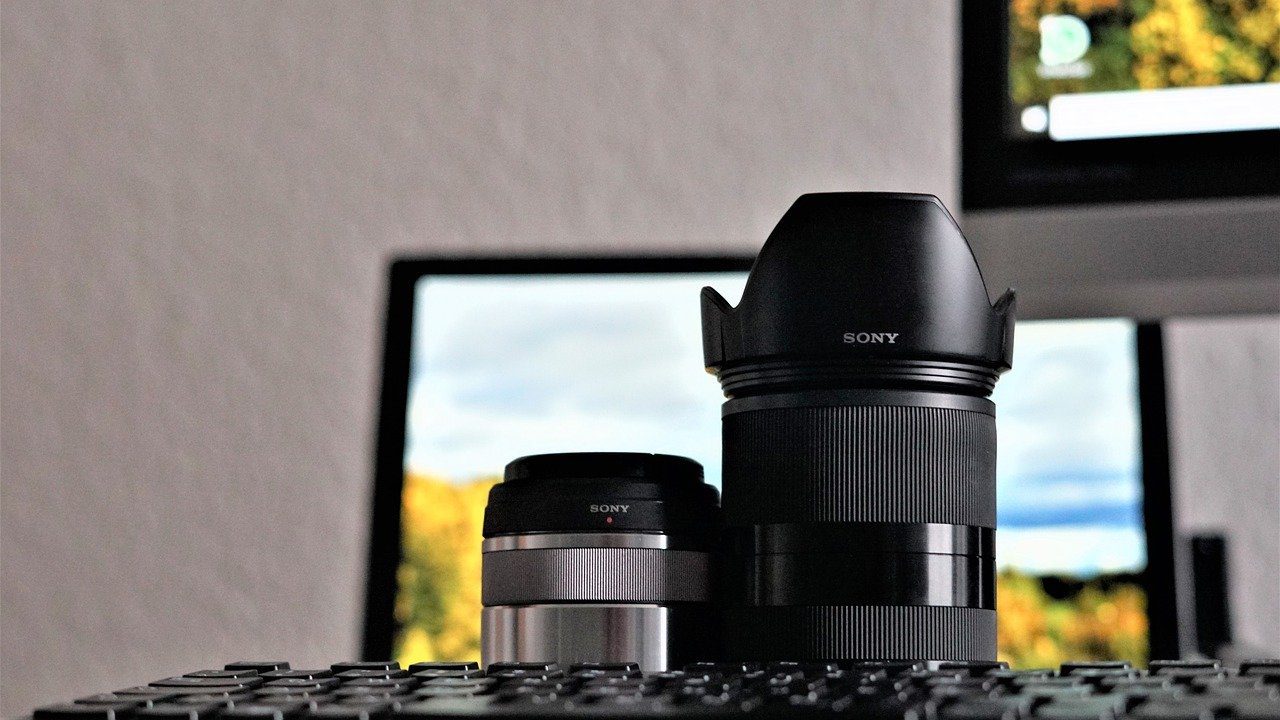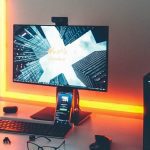Most of these touchscreen monitors work well with Windows 10 systems as well as a few Android phones. They tend to be a bit expensive than other monitors even if they do not bundle the latest specifications. This is primarily because of the screen. Nevertheless, if you want to buy a touch screen monitor for yourself, here are our recommendations for the best ones. But first,
Here are the best monitors for photo editing under $300Find out how to make stunning YouTube banners in Photoshop
1. Best Overall: Dell P2418HT
Resolution: 1920X1080 | Size: 23.8-inch | Panel: IPS Even though the P2418HT has been in the market for quite some time, it packs a sharp look. It’s a 10-point touch screen, which means that the screen will respond and detect even when you touch it all the 10 fingers. This feature is a godsend, especially if you plan to use this monitor to create art or graphics designing. While the picture quality is sharp, the screen still needs a bit of color calibration. Thankfully, the OSD buttons at the front make it easy to do so. The Dell P2418HT boasts of single DisplayPort, HDMI, and VGA connectors when it comes to the inputs. The former is especially helpful if you have a laptop with DisplayPort over USB-C. Unfortunately, there are no built-in speakers, so you will have to rely on an extended speaker or the ones on your laptop. However, it’s not perfect. The Dell P2418HT has an input lag of about 15 milliseconds and comes into play when you are playing fast-paced games.
2. Best of the Lot: Asus ZenScreen MB16AMT
Resolution: 1920X1080 | Size: 15.6-inch | Panel: IPS Not only does this touch screen monitor respond well to touches, but it also supports a slew of gestures such as scrolling, sliding, stretching, or pinching with your fingers, just as you’d do on your smartphone. For the record, it’s a 15.6-inch FHD display set in an IPS panel. However, at heart, the ZenScreen MB16AMT is not really meant for graphic designers or creators. During their test, the folks at PC Mag found the ZenScreen Touch to display 69% of the sRGB color space. At the end of the day, the ZenScreen MB16AMT makes for a good general-purpose touch screen monitor. And the fact that it doesn’t need a separate source of power is a huge plus. When it comes to connectors, this one comes with a USB Type-C and a micro-HDMI connector. Thankfully, the company ships the monitor with a USB-C cable (that supports DisplayPort over USB-C), making for a clutterless setup.
3. Also Consider: Planar Helium PCT2235
Resolution: 1920X1080 | Size: 22-inch | Panel: N/A The Planar Helium PCT2235 is a big monitor and measures around 21.5-inches and packs a full HD resolution. And like its counterparts above, it also packs 10-point multi-touch making it easy and convenient to work on. The Helium PCT2235 has its share of downsides as well. For one, the viewing angles are not that great. Plus, around 14 milliseconds’ response lag makes it unsuitable for gaming or for watching movies since the screen tends to leave a blur. If you must know, touchscreen monitors are slower when compared to their conventional non-touch monitors. Connection wise, it does pretty well and comes with each of HDMI, DisplayPort, VGA ports, and USB 2.0 ports, thereby giving you the liberty to hook the screen as per your preference. Do note that plugging the HDMI cable will not transfer the touch information across, and you will need another channel, preferably a USB cable for that.
4. Best Looks: Asus VT229H
Resolution: 1920X1080 | Size: 21.5-inch | Panel: IPS When it comes to ergonomics, it’s not as flexible as the Planar monitor above. As compared to the 55-degree tilt of the PCT2235, the Asus VT229H can only go up to 20-degree. And since it packs a conventional base, it’s not easy to lie it flat against tables or desks. One of the defining features of this touchscreen monitor is its sleek and bezel-free look. Though the thin bezels give it a cool look, it tends to get in the way of your work, especially if you stray too close to the screen edge. One of the major disadvantages of this monitor is its lack of a DisplayPort input. And in its absence, you get HDMI and USB-B port, which do the work of transferring video signals and touch data to the monitor. Apart from that, you get a VGA input and a 3.5 headphone jack.
The Midas Touch
Be it free-hand a sketch or tweaking the different modes in Photoshop, using a touch-based monitor helps in easing your work. More importantly, you can zoom in at one go instead of pressing some random keyboard shortcuts. So, which one of these will you buy? The above article may contain affiliate links which help support Guiding Tech. However, it does not affect our editorial integrity. The content remains unbiased and authentic.












